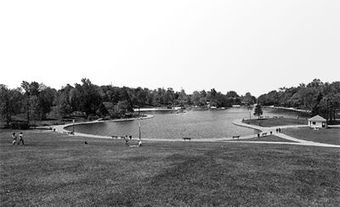Frederic William Cumberland
Frederic William Cumberland, engineer and architect, railway manager and legislator (b at London, Eng 10 April 1820; d at Toronto 5 August 1881). Known in his own day as a railway manager and politician, today he is celebrated as one of Toronto's leading 19th-century architects.
During the late 1830s Frederic Cumberland trained as an architect through apprenticeship, and then worked in the Civil Architects Department in the British Admiralty Royal Dockyards. He gained experience working on heavy fortifications and published technical papers on concrete and iron roofing systems.
He married in September 1845. His wife, Wilmot Bramley, was connected by marriage with the Ridout family in Toronto, and in 1847 the Cumberlands emigrated to that city. Cumberland established himself as both an engineer and an architect. In partnership with Thomas Ridout Jr and William George Storm (1826-92), Cumberland designed many significant buildings, mostly in Toronto, including the Cathedral Church of St James (1849-53); UNIVERSITY COLLEGE, UNIVERSITY OF TORONTO (1856-59); and OSGOODE HALL (1856-60, Centre Block renovations). His single best-known work is University College, which is characterized by irregular massing, contrasting materials, and skillful stone-carving.
Simultaneously with his work as an architect, Frederic Cumberland worked as the chief engineer and then managing director of the CANADIAN NORTHERN RAILWAY. One obituary stated that he was "feared but respected by rival railway men."
Cumberland had many interests in fraternal and volunteer activities, including the Mechanics Institute, the St George's Society, and many others. He was particularly active as a Freemason. Cumberland also served as a politician, representing both the provincial Ontario and federal Conservative parties between 1867 and 1874.
In 1861 Cumberland became the commanding officer, with the rank of lieutenant-colonel, of the 10th Batallion Volunteer Militia Rifles, Canada (later the 10th or Royal Regiment of Toronto Volunteers and later still the 10th Royal Grenadiers). In 1864 he became the unit's honorary colonel. In 1868 he served as aide-de-camp to Lord MONCK, then governor general; and between 1872 and 1878 he served on several occasions as an aide-de-camp to Lord and Lady DUFFERIN.
Frederic Cumberland was a practical and pragmatic person. Strongly influenced by the political philosophers of the English-speaking world, he regarded with approval the popular 19th-century political theorist John Ramsey McCulloch, who was himself influenced by Jeremy Bentham, John Stuart Mill and Adam Smith. In 1848, Cumberland wrote: "Science and the Arts are indissolubly blended with Commerce, each dependent on the other for the impulse which gives it life and for its full development; for if on the one hand Commerce did not offer the temptation of reward, men would be content to recline in slothful inactivity; so on the other, trade and commerce could not exist except as a means of exchanging the productions of individuals or communities." At the same time, Cumberland was influenced by the quasi-religious outlook typical of many English-speaking mid-Victorians in both England and Canada, who believed that discoveries in physical science would lead to a gradual revelation of the workings of the Divine Plan.
Frederic Cumberland's funeral was reported in the Toronto Mail as having "attracted as large a concourse of citizens as ever assembled in Toronto on any similar occasion." He is buried in St James's cemetery, Toronto. His personal papers, remarkably complete and rich in content, are found in the Archives of Ontario, Toronto.

 Share on Facebook
Share on Facebook Share on X
Share on X Share by Email
Share by Email Share on Google Classroom
Share on Google Classroom


